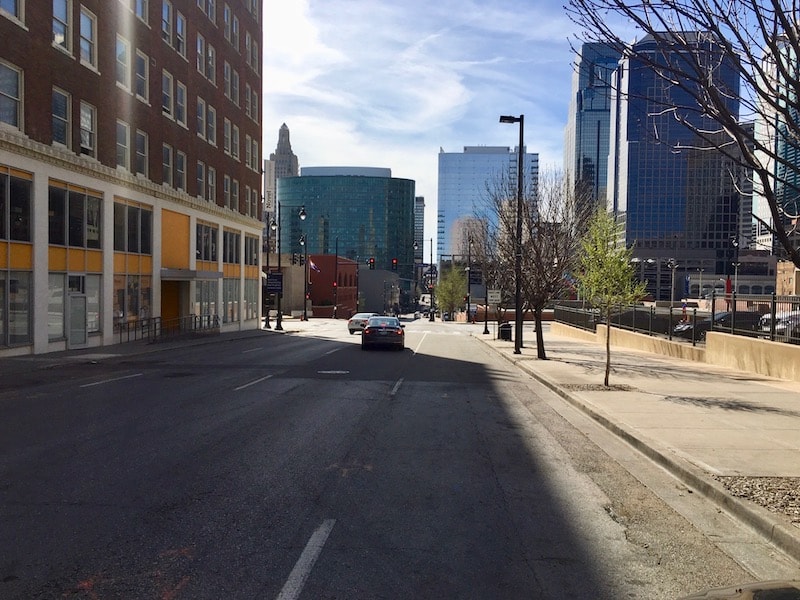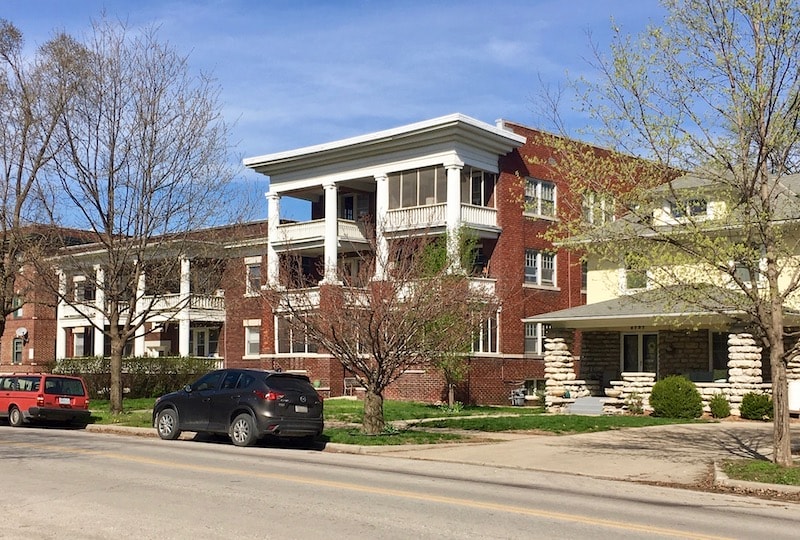Designing and Building a Better Kansas City for the Future

Published April 10th, 2019 at 12:15 PM
GUEST COMMENTARY
By Kevin Klinkenberg
Coming back to Kansas City has left me excited about the recent changes. The ship has turned, and there’s a strong sense of optimism in the air.
But as I noted before, the work is far from done. In fact, we have a long, tough mission ahead of us. The mission today is to accelerate our improvement, should we choose to accept it.
Your city and its people depend on your success. What could we do to begin to reverse the decline in all parts of the urban core, and accentuate those that are now desirable?
I’m not writing to say I have all the answers. I don’t. None of us does. But I do hope we can have a deep civic conversation around a set of key challenges.
First, it’s time to prioritize quality of life over fast commuting by car.
The foundation of all planning and design in our city is to make it easy to drive swiftly from long distances at rush hour, and park right at the door of any destination.
The results are unsafe and ugly streets that often destroy value instead of creating it, and copious parking virtually everywhere.
Let’s resolve to plan and design for the full 168 hours per week, and stop planning for the 10 hours per week of rush hour.
Second, let’s legalize the historic, built pattern of Kansas City.

Our city’s urban core was built on the backs of duplexes, four-plexes, small mixed-use buildings and the like. (Photo by Kevin Klinkenberg)
These “missing middle” buildings give the city the kind of Goldilocks density that supports local businesses, makes transit viable, is affordable and builds local wealth.
Yet today, common biases about housing coupled with dozens of well-intentioned, but harmful, ordinances make these types of projects functionally illegal.
Enabling many small changes accommodates immense demand in a humane and equitable fashion. Let’s find a way forward, as some other cities are already doing, to embrace broad, incremental improvement.
Third, let’s embrace the art of urban design.
Urban design, as opposed to planning or policy, looks for coordinated, site-specific solutions that are long-term in nature. We have a fantastic community of creative individuals, and people who work well on “projects.”
But we also need that coordinated vision of how to make one plus one equal three. This holds true whether we are discussing specific concerns, such as parking, parks and public space or even scooters and bikes.
Urban design tries to avoid one-size-fits-all responses for an entire city, and instead tries to solve problems at the scale of the block or the neighborhood.
While not in the immediate, transformative checkbox, we should also start a conversation about architecture and beauty. We won’t all agree, and that’s fine. It’d be boring if we did.
But in any really great city, beauty in architecture and public space is a prime part of what keeps the humans interested.

The skyline view from Liberty Memorial with Union Station are examples of the civic pride that built downtown.
We used to be really good at this. All you have to do is look around and see the legacy from previous eras. Frankly, it’s amazing. We are truly blessed to inherit what others have left to us. But simply having new buildings isn’t good enough.
If we rebuild the city, but fill it with ugliness, this moment in time will fade and the humans will move on to somewhere and something else. As Michael Stern used to say about the Kansas City Symphony, good enough is not good enough.
It’s the accumulation of many, small changes over time that determines whether a city has value or whether it becomes another throw-away place. It’s a long game.
Doing it well creates great places for humans and a fountain of revenue for local government and the services it must provide.
We are good at dreaming up big, inspiring civic and corporate efforts. That’s a good thing; it shows we have a community that cares and is actively trying to make the future better.
But it would be wise for us to challenge ourselves on some current mindsets, while also striving to do a much better job executing the details.
From that 2003 “Midwest Voices” column I wrote for The Kansas City Star again:
There’s a thousand reasons why we should embrace urbanity – the most important being the future of our metro. We all know that we lack the natural features that attract people to places like Colorado, California or the Sun Belt.
In those places, people will willingly put up with placelessness (at least for a while), as they at least have access to something else that’s compelling. But in Kansas City, we don’t have the luxury of that margin of error.
If we are to not just survive, but thrive, in the 21st Century, we had better learn and apply the rules of great place-making. As we build or renovate each structure in our downtown, we should be asking, “What is the hundred-year plan for downtown?”
Does it look like Paris or London, or Chicago? (why set the bar low?) Or, is it a boring mixture of parking garages, big roads and office towers?
Kevin is an architect, urban designer and Principal of K2 Urban Design & Development. His 25 years of professional experience include leading 180 Urban Design & Architecture for a decade and leading a development authority in Savannah, GA.
He also writes occasionally at messycity.com. Kevin attended the University of Kansas and lived in Midtown KC from 1993-2010.


